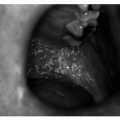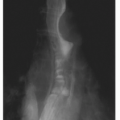CLINICAL PEARLS
Time is brain.
Thrombolytic therapy can improve survival and function if administered within 3 hours of stroke onset.
Age alone is not a contraindication to thrombolytic therapy.
Stroke unit care for patients with acute stroke is associated with improved survival, reduced complication rates and improved function.
To prevent strokes, patients should control blood pressure, use antithrombotic therapy, lower lipids, control blood sugar, exercise regularly, and stop smoking.
Benefits of warfarin outweigh the risks for most elderly patients with atrial fibrillation and a history of stroke or transient ischemic attack (TIA).
Clinicians should routinely monitor elderly poststroke patients for cognitive decline, depression, and dependence in activities of daily living.
A clinician has several important opportunities to decrease the devastating physical, cognitive, and emotional effects of stroke. First, educating patients to seek emergent care for stroke symptoms may allow treatment to limit the extent of irreversible brain damage. Second, the identification and treatment of modifiable stroke risk factors can reduce the risk of first stroke and recurrent stroke. Third, once the stroke has occurred, preventive measures can decrease the risk of common stroke-related complications. Fourth, the treatment of stroke-related complications may reduce their impact on function, independence, and quality of life.
DIFFERENTIAL DIAGNOSIS OF STROKE SIGNS AND SYMPTOMS
A stroke or transient ischemic attack (TIA) causes focal brain ischemia, resulting in the sudden onset of focal neurologic symptoms such as unilateral weakness, numbness, or clumsiness, or it may cause global symptoms such as headache, nausea and vomiting, altered mental status, dizziness, or seizures. The differential diagnosis of conditions that can cause focal or global neurologic symptoms is exhaustive (see
Table 28.1), but few conditions other than stroke cause a rapid onset of focal brain dysfunction.
Focal neurologic symptoms can also be caused by central nervous system conditions such as tumor, infection, seizures, demyelinating disease, or nutritional deficiencies. The focal symptoms may be due to conditions that affect the peripheral nerves, such as Bell palsy, optic neuritis, diabetic ophthalmoplegia, labyrinthitis, and mononeuropathies of the limbs. The causes of both global and focal neurologic symptoms include hypoxia, hypercarbia, hypotension, arrhythmia, hypoglycemia, hyperglycemia, electrolyte imbalance, systemic infection, hepatic or renal failure, adverse drug reaction, and seizures.
A stepwise approach to evaluation and treatment (see section
Workup/Keys to Diagnosis) can help confirm the presence of a stroke and exclude competing diagnostic possibilities.
DISEASE BACKGROUND
Description/Definition of Problem
Over 700,000 Americans suffer a stroke each year. Age is the most important risk factor for stroke, with the peak incidence among those older than 80. With increasing age, strokes cause a greater degree of disability and result in a higher rate of mortality.
Pathophysiology
A stroke is caused by the sudden interruption of the cerebrovascular blood supply, causing focal brain ischemia and infarction. The signs and symptoms caused by focal ischemia are determined by the function of the damaged brain cells. A TIA is defined as the complete resolution (within 24 hours) of the signs and symptoms of brain ischemia.
Strokes are classified by pathophysiologic types because the acute treatment and subsequent preventive therapies
differ according to the pathophysiology. The two major types of stroke are ischemic and hemorrhagic.
In the elderly, most strokes are ischemic. An ischemic stroke occurs when a thrombus occludes a cerebral artery. The ischemic occlusion of a cerebral artery can be the result of a locally formed arterial thrombus (thrombotic stroke) or due to a thrombus that forms in the heart or larger arteries and embolizes distally (embolic stroke). One method of characterizing ischemic strokes according to anatomy and pathophysiology uses three ischemic stroke categories: Large artery atherosclerosis, small artery occlusion, and cardioembolism. Large artery atherosclerosis involves severe arterial narrowing or atherosclerotic plaque rupture leading to thrombus formation in the carotid, vertebral, basilar, middle cerebral, or anterior cerebral arteries. Small artery vascular occlusion of the penetrating cerebral arteries is due to arterial narrowing caused by vascular hypertrophy and thrombosis. Cardioembolic strokes occur when atrial fibrillation, prosthetic valves, diseased mitral and aortic valves, or areas of akinetic myocardium promote the formation of a cardiac thrombus within the heart that embolizes and occludes a cerebral artery.
A hemorrhagic stroke occurs when a cerebral artery ruptures due to conditions that make arteries stiff and fragile (e.g., atherosclerosis, hypertensive lipohyalinosis) or weak (e.g., arterial aneurysm, amyloid angiopathy). A bleeding disorder, brain tumor, arteritis, or trauma can also produce a cerebral hemorrhage.
Systems Impacted
A stroke can have deleterious effects on cognition, communication, mood, sensation, strength, stamina, independence in activities of daily living (ADL), and the ability to safely ingest adequate amounts of fluid and nutrients. Complications associated with a stroke include pneumonia, urinary tract infection (UTI), deep vein thrombosis (DVT), pulmonary embolus (PE), falls, fractures, pressure ulcers, and painful musculoskeletal conditions. Cognitive deficits and muscular weakness may increase falls and injuries. The occurrence of stroke signals not only the immediate risk of death due to the stroke or its acute complications, but also the future risk of acute illness and even death from ischemic cardiovascular events like myocardial infarction, claudication and critical limb ischemia, or recurrent stroke.
Incidence and Prevalence
The incidence of stroke varies according to an individual’s risk factors for stroke.
Table 28.2 lists common modifiable and nonmodifiable risk factors and conditions associated with stroke. Modifiable risk factors are conditions that may respond to lifestyle change, medication, or surgery, with a resultant decrease in the risk of first or recurrent stroke. Attention to all modifiable risk factors is important because multiple risk factors impart cumulative risk.
Impact on Function
Stroke is the leading cause of disability in the United States.
1 One survey of stroke survivors of age 65 and older found that 6 months after the stroke, 50% had hemiparesis, 35% experienced depressive symptoms, 30% required assistance with walking, 26% were dependent in some ADL, and 19% had aphasia.
1 Stroke frequently causes or exacerbates cognitive decline. Elderly stroke survivors often require prolonged rehabilitation, and approximately one fourth will need permanent care in a long-term care facility.
1
WORKUP/KEYS TO DIAGNOSIS
The first hours of evaluating a patient with signs and symptoms of an acute stroke are critical. The three main objectives in this period are stabilization of the patient, confirmation of the diagnosis of stroke, and determination of eligibility for thrombolytic therapy. The clinical questions in the subsequent text can help guide this process.
2After stabilization, the clinician’s tasks are to identify and reduce risk factors for early stroke-related complications, assess physical and cognitive status to determine the need for physical, occupational or speech therapy, characterize the type of stroke, and devise a comprehensive treatment plan that optimizes physical, cognitive, and emotional health and reduces the risk of recurrent stroke.
Is the Patient Medically Stable?
One must first confirm that the patient is medically stable and has optimum cerebral perfusion by assuring that the airway is adequate, oxygenation is normal, and that blood pressure and pulse are stable.
Are the Signs and Symptoms Consistent with a Presumptive Diagnosis of a Stroke?
Signs and Symptoms
Any abrupt decline in neurologic or cognitive function can be the sign of a stroke (see
Table 28.3). Unlike other possible diagnoses, strokes occur suddenly, occur in a clinical context consistent with the pathology of the cerebral vessels, and produce signs and symptoms of focal brain dysfunction. Other elements that favor the diagnosis of a thrombotic or embolic stroke include a new neurologic deficit upon awakening, a prior history of transient cerebral ischemia, the presence of stroke risk factors, (
Table 28.2) evidence of atherosclerotic cardiovascular disease, and the presence of valvular heart disease or cardiac arrhythmia.
Did the Syndrome Develop Suddenly?
Most stroke syndromes develop within seconds or minutes. Two important exceptions to this rule are the strokes that develop during sleep, creating a new neurologic deficit evident only upon awakening, and the thrombotic stroke that produces a progressive neurologic deficit that reaches maximum intensity over many hours. The gradual onset of neurologic deficits suggests diagnoses such as subdural hematoma (SDH), brain tumor, demyelinating disease, or nutritional deficiencies. Some causes of stroke-like neurologic symptoms can develop quickly (e.g., seizures, hypoxia, hypotension, arrhythmia, hypoglycemia, hyperglycemia) or more slowly (e.g., electrolyte imbalance, systemic infection, hepatic or renal failure, adverse drug reaction), but these causes tend to produce global, rather than focal, neurologic dysfunction.
Is There Evidence of Focal Brain Dysfunction?
Common signs and symptoms of brain ischemia are listed in
Table 28.3. Most evaluations for acute stroke occur in emergency departments and will include the completion of a stroke severity assessment such as the National Institutes of Health Stroke Scale (NIHSS)
3 (see
Table 28.4).
If a formal stroke scale has not been done, a focused physical examination to detect focal brain dysfunction should assess cognitive ability, speech abilities, visual fields, cranial nerve function, motor function, sensation, and gait. The physical examination should also assess cardiopulmonary status.
Do Diagnostic Studies Confirm a Stroke?
Diagnostic tests are used to confirm the presence of a stroke or of a condition masquerading as a stroke. The tests also evaluate comorbid illness that may contribute to stroke-like symptoms or influence subsequent management. Diagnostic protocols may vary and evolve according to new information and local custom.
Table 28.5 lists essential and optional testing for the patient presenting with symptoms of acute stroke (Evidence Level C).
4
Is Cerebral Hemorrhage Present?
Intracerebral hemorrhage is usually detected by the initial brain imaging study. Although computed tomography (CT) scan and magnetic resonance imaging have a 96% concordance for the diagnosis of hemorrhage, neither imaging study can exclude the presence of hemorrhage with 100% accuracy.
5 The clinical suspicion of a hemorrhage may require further investigations, such as lumbar puncture or additional brain imaging. For example, compared to patients with ischemic stroke, patients with intracerebral hemorrhage are more likely to have a decreased level of consciousness, headache, vomiting, and very high blood pressures at initial presentation.
Does the Patient Fulfill Criteria for Thrombolysis?
The phrase “time is brain” highlights the importance of rapid assessment to determine the eligibility for thrombolytic therapy to diminish neuronal damage. Rapid assessment is essential because a patient may be a candidate for intravenous thrombolytic therapy if stroke symptoms have been present for <3 hours (Evidence Level A). Patients who awaken with stroke symptoms are not thrombolysis candidates. If intravenous thrombolysis is given beyond this 3-hour time limit, the likelihood of devastating intracerebral hemorrhage increases.






